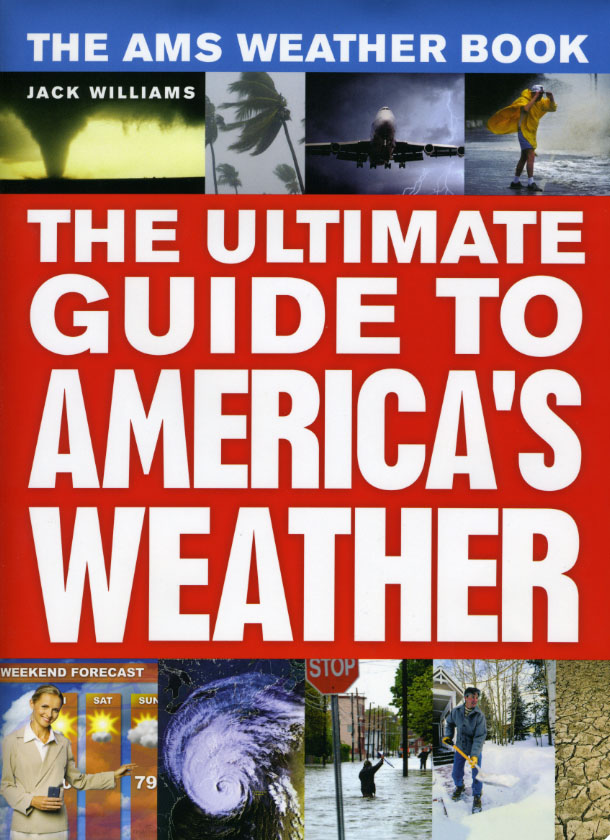Outtakes: A Meteorological Pioneer
Carl-Gustaf Rossby (1898–1957), a Swedish meteorologist who came to the United States in 1926, was one of the leaders in making meteorology a mathematical science based on fluid dynamics.
He was both a forecaster and a mathematical theorist who had worked with Vilhelm Bjerknes in Europe. When he was invited to the United States in 1925, he expected to share the Norwegian concepts and techniques with the U.S. Weather Bureau, but few of the bureau’s leaders and forecasters at the time were interested in new ideas.
At the same time, technical advances were beginning to turn airplanes into the major sources of military and commercial power they became during and after World War II. In the 1920s, aviators were discovering that improved weather forecasts were needed to take flying beyond a mere fair-weather amusement, but the Weather Bureau had little interest in helping them. In fact, its forecasts so displeased Charles Lindbergh during his forty-eight-state flying tour in 1927, following his celebrated flight across the Atlantic, that he asked Rossby to forecast for his flight from Washington, D.C., to Mexico City in December 1927.
The following year a private foundation, the Daniel Guggenheim Fund for the Promotion of Aeronautics, financed an aviation forecasting system in California, which Rossby organized and ran, showing how the job could be done.
From the 1930s into the 1950s Rossby, among other things:
- helped establish the meteorology department at Massachusetts Institute of Technology—the first in the United States;
- was part-time research chief of the Weather Bureau, which was finally modernizing, in 1939 and 1940;
- became the first head of the new University of Chicago meteorology department in 1941;
- founded four meteorological journals;
- ran the program that trained more than 6,000 meteorologists in universities for the armed forces during World War II;
- helped lay the foundations for computerized weather forecasting; and
- continued working on meteorological theory.
Rossby is best known today for working out the mathematics of the wavy paths that middle-latitude upper air winds follow around the globe. These upper atmosphere long waves, which are now called Rossby waves, not only move heat toward the poles and cold air toward the tropics but also help form areas of high and low air pressure at the surface and steer storms.
Rossby is sometimes described as the discoverer of jet streams, which are part of the upper air’s long-wave circulation. While in 1947 and 1948 Rossby and other University of Chicago meteorologists published the papers that explained how jet streams and other aspects of the dynamics of the upper atmosphere work, they weren’t the first to realize that winds aloft often exceed 100 miles per hour.
On December 17, 1956, Rossby was on the cover of Time Magazine, and the long story inside that issue summed up his many accomplishments. The cover and story, in Time’s breezy style of the 1950s, are available online. The story has one glaring error: the MIT meteorologist Hurd Willett is called “Kurd Willett.” This error aside, the article is a good summary of the meteorology of the time and a good read.
The story describes that after 1950 Rossby returned to Sweden and turned to new atmospheric science problems, including the “CO2 Menace. Another atmospheric variable is carbon dioxide. CO2 is comparatively plentiful downwind of industrial areas such as the Ruhr, and there is a good possibility that man’s fires and engines are adding so much of it to the atmosphere that the world’s climate may be changed drastically by the solar heat that it traps. Rossby wants to find out about this little matter too.” (At the time, scientists didn’t fully realize how gases added at one place become well mixed in the entire atmosphere.)
The story describes another way in which in the mid 1950s Rossby was a good twenty years ahead of the times: “Rossby’s next project, which may make him spend more time in the U.S., is to bring meteorology into close relationship with the other earth sciences, especially oceanography. The atmosphere affects both the sea and the land, and is affected by them, so meteorologists ought to work closely with oceanographers, geographers and geologists.”
Many parts of The AMS Weather Book reflect today’s concern, which Rossby foretold, with the links between meteorology and other sciences.

